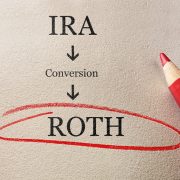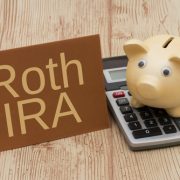The Self-Directed Traditional IRA vs. the Self-Directed Roth IRA
The Self-Directed Traditional IRA, or simply the Traditional IRA itself, is the oldest retirement plan in existence. For this reason, a lot of investors have faith in it and how it works. But with newer accounts available, including Self-Directed Roth IRAs, it becomes important for investors to weigh their options. What kind of IRA is best for their situation? We can’t answer that for investors. What we can do, however, is compare the two to give you a baseline understanding of these two accounts and what their most glaring differences are. Here’s what you’ll need to know.
Self-Directed Traditional IRAs: an Overview
The Self-Directed Traditional IRA is generally better for people who are eligible to deduct a contribution now, anticipating their income at retirement could mean a lower tax rate then. When you make a contribution to a Self-Directed Traditional IRA, that contribution will be tax-deductible, assuming you meet the requirements. Then, upon hitting retirement age, you’re then able to get the money out of the account and pay taxes on it as income. This means that your contributions can be a “before-tax” arrangement.
Self-Directed Roth IRAs: an Overview
A Roth, by contrast, works almost in reverse. Rather than using before-tax money for contributions, a Self-Directed Roth IRA works with “after-tax” contributions. This means that you are taxed on the income you use towards a Roth IRA. However, because that money has already been taxed, you will then be able to keep that money in the Roth IRA as it grows tax-free, and then take it out upon retirement age, tax-free. This assumes all of the requirements have been met. For many people, this is a blessing because it means that they can plan for a higher income in retirement and postpone tax savings until then.
What is the Difference Between the Two Accounts?
In terms of Self-Direction, you might view the two accounts as having a lot of similarities. But when it comes to how they’re funded, you’ll find that they couldn’t be more different, even though they’re both different types of the same thing: an IRA. You have to consider your own financial situation if you want to make sense of whether you want to front-load or back-load paying taxes on the income you put towards retirement. That requires working with a financial advisor.
You should also consider some of the other individual quirks of each account. For example, a Roth IRA’s after-tax contributions mean that you don’t have to take Required Minimum Distributions after a certain age. You can simply let the Self-Directed Roth IRA grow and grow. With a Traditional IRA, because you haven’t paid taxes on the income that went towards the retirement account, the U.S. government does want you to take required minimum distributions to ensure that the taxes are paid. This is a key difference between the two accounts and can be critical for how you plan your retirement.
With Self-Direction, you’ll have a lot of options for investing. You can diversify beyond the typical stock market investments and invest in real estate, gold and precious metals, tax liens, LLCs, and more. Having this ability means that you’ll have more power in your hands as an investor. However, you’ll want to make sure that you work with a good team who can keep you doing the right thing. That means having an accountant / financial planner on your side. In addition, you’ll want a Self-Directed IRA administration firm to serve as custodian on the account and handle administrative duties.
Interested in learning more about Self-Directed IRAs? Contact American IRA, LLC at 866-7500-IRA (472) for a free consultation. Download our free guides or visit us online at www.AmericanIRA.com.








